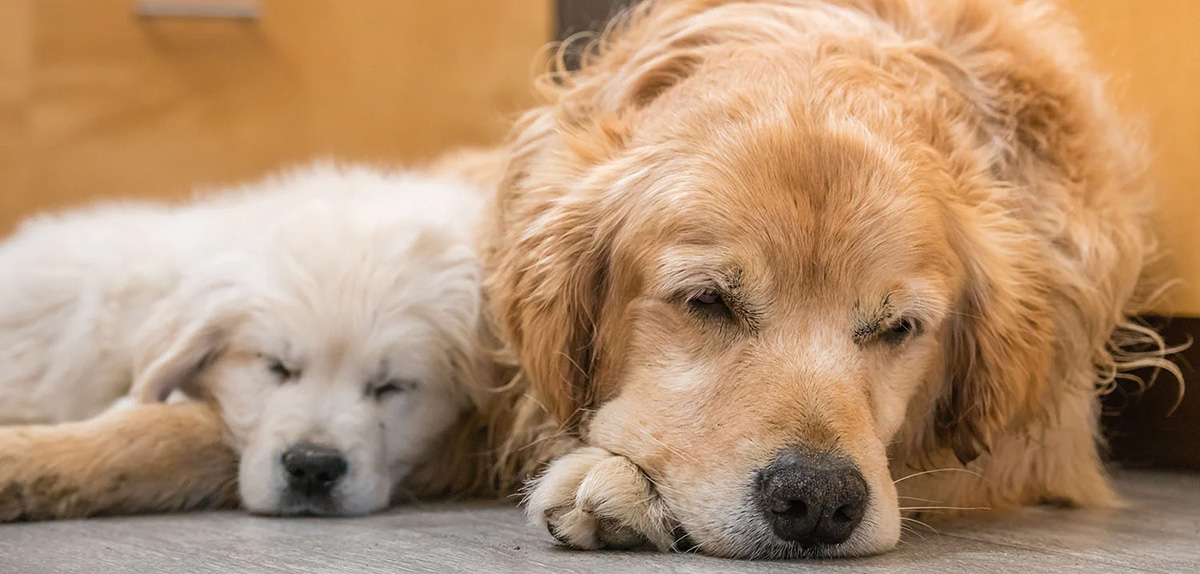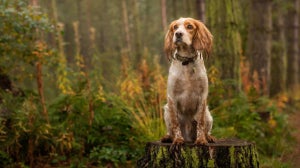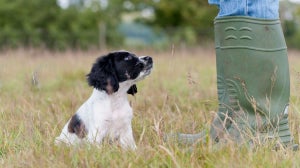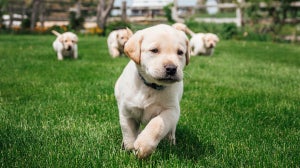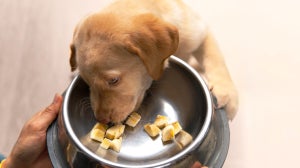
Dogs are fantastic companions, so it’s no wonder many pet owners choose to get a second dog after they’ve experienced what having a dog is like. However, getting a new puppy when you already have existing pets can be a tricky scenario to navigate, which is why James Wellbeloved are here to offer advice on introducing a new puppy to your current dog, as well as other pets and children.
Introducing a new puppy to a dog
Although dogs are known to be sociable animals, existing pets are sometimes uncomfortable with the introduction of a new puppy. It is therefore important to make the first meeting between your new puppy and your current dog as easy as possible to reduce any potential stress. To do this, you can follow these useful tips:
Create a separate area for your puppy
Before you bring your new puppy home, create a separate area for them, away from your current dog’s eating and sleeping spots. You will want to buy separate food and water bowls, toys and a bed for your puppy to avoid your dog becoming possessive.
Introduce your puppy’s smell
If you can, a week before you are due to bring your new puppy home, offer your dog a blanket or towel with the puppy’s smell on it for them to investigate. If your dog is already familiar with your puppy’s smell, they will accept the puppy more quickly and bond with them faster.
Find a neutral space
Once your new pup is safely home and settled in, find a neutral space to introduce them to your dog. If possible, a nearby park is a great option, as your dog is less likely to be territorial. If you have to make the introduction at home, you can use a door or a baby gate as a barrier to help the two dogs see and smell each other from a safe distance.
Meeting face to face
Finally, it’s time for your puppy and your dog to meet face to face. Let the two animals investigate each other at their own pace. If either dog shows signs of anxiety, distress or aggression, separate them using treats to distract them and try again later. The important thing is to stay calm and relaxed throughout – don’t try to force the two animals together.

Introducing a new puppy to cats
Introducing a new puppy to a cat can be tough – cats are usually less tolerant than dogs and will quickly make their disapproval known in the form of hissing or spitting. A young boisterous puppy may prove to be an annoyance for an existing cat, so it’s important to get the preparation right.
You can use the scent technique for cats, too – just take the blanket with your new puppy’s smell on it and leave it for your cat to investigate. You could rub the blanket on different spots around the house to familiarise your cat with the smell. You should also ensure that your cat’s eating and sleeping spots are separate to the puppy, and that your cat can easily escape to a high area if they feel stressed or irritated. The first time the two meet, put your puppy on a lead and use treats or toys to keep them entertained while your cat investigates. As before, keep meetings short and simple – don’t try to force your cat to do anything they are unhappy with.
A new puppy and children
It’s incredibly exciting for children when you bring home a new puppy – but it’s important to explain to them how to properly greet the new arrival. Teach young children how to handle animals beforehand, including gentle patting or stroking. As new puppies often feel overwhelmed and homesick for mum, calm and quiet behaviour will help to reassure them. Always supervise children with the puppy and avoid using treats or toys to start with, as this may lead to overexcitement and rough behaviour.
Your pets may not always be best friends, but they should be able to co-exist happily. If you experience any issues introducing your pets, you can ask a vet or pet behavioural specialist for advice.

Related Articles


